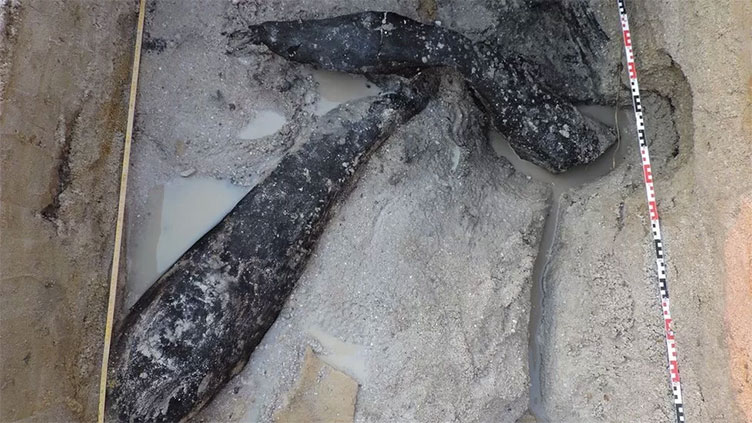Half-million-year-old wooden structure unearthed in Zambia

Technology
The discovery has changed archaeologists' understanding of ancient human life
(Web Desk) - The discovery of ancient wooden logs in the banks of a river in Zambia has changed archaeologists' understanding of ancient human life.
Researchers found evidence the wood had been used to build a structure almost half a million years ago.
The findings, published in the journal Nature, suggest stone-age people built what may have been shelters.
"This find has changed how I think about our early ancestors," archaeologist Prof Larry Barham said.
The University of Liverpool scientist leads the Deep Roots of Humanity research project, which excavated and analysed the ancient timber.
The discovery could transform the current belief ancient humans led simple, nomadic lives.
"They made something new, and large, from wood," Prof Barham said.
"They used their intelligence, imagination and skills to create something they'd never seen before, something that had never previously existed."
The researchers also uncovered ancient wooden tools, including digging sticks. But what excited them most were two pieces of wood found at right angles to each other.
"One is lying over the other and both pieces of wood have notches cut into them," University of Aberystwyth archaeologist Prof Geoff Duller said.
"You can clearly see those notches have been cut by stone tools.
"It makes the two logs fit together to become structural objects."
Further analysis confirmed the logs were about 476,000 years old.
Team member Perrice Nkombwe, from the Livingstone Museum, in Zambia, said: "I was amazed to know that woodworking was such a deep-rooted tradition.
"It dawned on me that we had uncovered something extraordinary."
Until now, evidence for the human use of wood has been limited to making fire and crafting tools such as digging sticks and spears.
One of the oldest wooden discoveries was a 400,000-year-old spear in prehistoric sands at Clacton-on-Sea, Essex, in 1911.
Unless it is preserved in very specific conditions, wood simply rots away.
But in the meandering riverbanks above the Kalambo Falls, close to the Zambia-Tanzania border, it was waterlogged and essentially pickled for millennia.
The team measured the age of layers of earth in which it was buried, using luminescence dating.
Grains of rock absorb natural radioactivity from the environment over time - essentially charging up like tiny batteries, as Prof Duller put it.
And that radioactivity can be released and measured by heating up the grains and analysing the light emitted.

